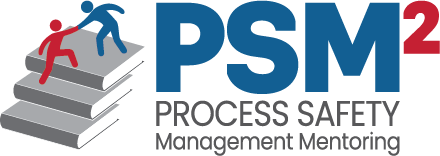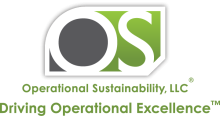15th Process Safety Management Mentoring (PSM2) Symposium

The Process Safety Management Mentoring (PSM2 ) Symposium is one of five parallel tracks which together comprise the Global Congress on Process Safety (GCPS). The PSM2 Symposium is a tutorial-based track aimed at professionals who may be new to the field of process safety, those who now have a management role in process safety, and those interested in strengthening their knowledge of process safety. The principles behind the PSM2 Symposium are to highlight tools, techniques, and lessons learned that would enhance the audience's understanding of the applications of process safety management.
Encouraged topics for this conference include, but are not limited to:
- Tutorials in Process Safety
- What I Want to Be When I Grow Up - Careers in Process Safety
- Lies We Tell Ourselves – Cognitive Bias and Human Performance in Process Safety
- Process Safety 101 – Introduction to Technical Aspects of Process Safety
- Process Safety in Non-Petrochemical Industries
- What Should be Keeping You Up at Night but Isn’t: Things Everyone Should Know About Process Safety
- The Day PSM Hit Home
- How to Influence the Organization on Process Safety
- What is Process Safety Culture and How Does It Apply to Me?
- The Faces of Process Safety: Process Safety Mentoring for Our IDEAL Workforce
- RAGAGEP Interpretation and Implementation
PSM2 Chair & Vice Chair:
-
John Wincek and Chris Israni, PSMM_chair@aiche.org
Session Topic Descriptions:
Tutorials in Process Safety – six sessions in partnership with other tracks in the 2025 GCPS for Call for Abstracts (CFA)
The objective of these sessions is to provide process safety introductory and basic key skill sessions tutorials for attendees and are co-sponsored by three main symposia tracks in the Global Congress: Loss Prevention Symposium (LPS), the Center for Chemical Process Safety (CCPS) International Conference, and the Process Plant Safety Symposium (PPSS). Examples of topics include the following:
- Loss Prevention Symposium (LPS) – focused on technological advances in process safety
-
Potential LPS Tutorial session(s) include modeling, consequence, and risk analyses of fires, explosions (including combustible dusts), new development in failure databases, toxic releases, and reactive chemicals; siting of buildings and equipment; explosion prevention; pressure relief systems; and fire protection.
-
-
Center for Chemical Process Safety (CCPS) International Conference – focused on promoting and advancing process safety management practices
-
This year's Tutorials in CCPS focal point is "Process Safety 101 - Introduction to Process Safety Management Systems."
The CCPS model for Risk Based Process Safety contains 20 elements. Each plays a critical role in a sound management system for Process Safety. This session will focus on the fundamentals of the 20 elements. Papers are requested that provide a basic, fundamental understanding of one of the 20 elements. The paper and presentation should be developed for an audience of those new to process safety.
-
- Process Plant Safety Symposium (PPSS) – This tutorial is focused on the application of best practices for personnel at the plant level
- Potential PPSS Tutorial session(s) include practical applications of process safety management principles (see CCPS RBPS elements); risk analyses; asset integrity/mechanical integrity, conduct of operations, layers of protection analyses; operational discipline and the influence of human factors.
What I Want to Be When I Grow Up - Careers in Process Safety
Session sponsored by the Careers and Education Committee of the Process Safety Division
The objective of this session is to discuss career paths in Process Safety. It is a call for four speakers to each provide a 15 min presentation on their career path and then participate in a 30 min panel Q&A session based on the following premise: How can attendees use their chemical engineering education to protect people and the environment from hazardous situations? How can they contribute to the safe and sustainable operation of manufacturing facilities?
The objective of this session is to discuss career paths in Process Safety. It is a call for four speakers to each provide a 15 min presentation on their career path and then participate in a 30 min panel Q&A session based on the following premise:
How can attendees use their chemical engineering education to protect people and the environment from hazardous situations?
How can they contribute to the safe and sustainable operation of manufacturing facilities?
Lies We Tell Ourselves – Cognitive Bias and Human Performance in Process Safety -Focused on preventing overconfidence bias and maintaining a sense of vulnerability in continuous improvement of process safety programs and performance.
Humans are not great at assessing risk. In particular, engineers tend to be an optimistic group, ready to solve any problem by relying on their technical skills and experience. They are particularly bad when it comes to assessing high consequence, low frequency events like those typically discussed during a Process Hazard Analysis (PHA). They may fail to fully grasp the meaning of measurement in unfamiliar units, like risk criteria expressed in terms of once in a million years. Papers in this session will discuss several lies we tell ourselves when confronted with the need to identify worst case scenario such as “It can’t happen here”, “It can’t possibly be that bad”, “We will know there is a problem and we will fix it”, and “We can engineer our way out of this”. This session also invites papers to explore how diversity and inclusion in human factors engineering can benefit safety (e.g., inclusive design approach can prevent unintended biases from compromising safety).
Process Safety 101 – Introduction to Technical Aspects of Process Safety
There are many technical specialists that perform engineering work in support of Process Safety. These include areas such as control and interlock design, emergency relief systems, hazardous area classification, quantitative risk analysis, chemical reaction hazards, and others. Papers are requested that provide a basic understanding of one of these technical topics, including terminology, concepts, and understanding results.
Process Safety in Non-Petrochemical Industries
Sometimes it is useful to reconnect with the fundamentals of any discipline, and process safety management is no exception. This “back to basics” approach could be applied to any of the elements of PSM, from proper design of pressure relief systems to ensuring an effective training program, and other examples abound. What are some aspects of PSM you have observed in the industry that seem like they should be common knowledge, yet are often misunderstood or misapplied? What about PSM concepts in industries such as food and beverage, pharma, mining, and metals? As we seek a culture of continuous innovation and improvement in the PSM space, it is important never to lose our connection with the fundamentals.
What Should be Keeping You Up at Night but Isn’t: Things Everyone Should Know about Process Safety – focused broadly on process hazard recognition and lessons learned from careers in Process Safety
Process hazards can go unrecognized or underappreciated for a variety of reasons. Ignorance of the hazard is a convenient excuse after an incident. This session is intended to be a preemptive strike against this ignorance. Unlike the Day PSM Hit Home, the talks in this session need not be motivated by an incident. Rather, talks should focus on the incident that hasn’t occurred, and how to recognize it. Example topic areas include investigation and sharing of lessons learned from near misses, hazard identification, operational discipline, human reliability, process safety culture, and what lies behind the “mass of safety metrics.” Presentations of client/consultant shared case studies which could provide learning outcomes other companies could follow are encouraged to submit here. Additionally, this session welcomes papers discussing the potential effects on PSM due to changing workforce demographics throughout the industry, such as the loss of institutional knowledge as experienced personnel leave the workforce.
The Day PSM Hit Home – focused on sharing first-hand experiences that led to a personal commitment to Process Safety
Many process safety professionals have lived and worked through “learning experiences” that made them realize just how critical a good process safety program is. The three speakers will share how significant incidents changed their view on how they understand and apply process safety principles as a result of the experience. Prospective speakers that are willing and able to share such an experience are encouraged to submit an abstract briefly outlining the event and lessons learned.
How to Influence the Organization on Process Safety
Process Safety practitioners rarely hold positions in the line management organization. This limits their ability to cause change in the organization; alternatively, they must influence their organization in ways that result in sound management practices that support Process Safety. This session requests papers the describe ways to influence the decision makers in a positive way that creates the desire and requirement to implement sound process safety practices.
What is Process Safety Culture and How Does It Apply to Me? – focused on defining process safety culture and how new process safety professionals can support a strong process safety culture
Process safety culture has been defined as “the combination of group values and behaviors that determine the manner in which process safety is managed.” More commonly, it is simply “how we do things around here.” Many new process safety professionals struggle to understand what process safety culture is and how it applies to them. This session invites papers that provide an overview of process safety culture, characteristics of a strong safety culture, and the responsibility of every employee to support and strengthen their company’s process safety culture.
The Faces of Process Safety: Process Safety Mentoring for Our IDEAL Workforce – Focused on a movement committed to driving action, by opening doors and eliminating barriers to advancement for people of diverse backgrounds and experiences. This session will have 4 speakers to each provide a 15-minute presentation then participate in a 30-minute panel Q&A session based on the following premise:
“To give those new to process safety, those who see to expand or refresh their knowledge, and experienced professionals who can reflect on their current practices and provide an opportunity to learn about real life equal opportunity challenges for process safety and how to develop and achieve success.”
This session will be based on the AIChE Inclusion, Diversity, Equity, Anti-racism, and Learning (IDEAL) commitment.
AIChE believes that all who wish to be a part of the chemical engineering community should have equal opportunity to pursue and achieve success. We work toward a better future for all —through our technical expertise; through how we inspire, engage, retain, and advance future talent; and through how we treat each other within and beyond the profession. Solutions to 21st century problems require innovation and creativity, which are accelerated through diverse teams and by ensuring that spaces are inclusive. This session will also seek to establish a dialogue between the panelists and the attendees regarding both IDEAL issues and overall changing workforce demographics throughout the industry.
RAGAGEP Interpretation and Implementation
In the world of process safety, the amount of Recognized and Generally Accepted Good Engineering Practices (RAGAGEP’s) can be overwhelming. This session will provide introductions to various types of RAGAGEP’s, including new RAGAGEP’s and regulations, along with challenges and successes for navigating this landscape.
GCPS Joint Session: Case Histories
Reviews of process safety incidents provide valuable learning opportunities. This session invites papers to help understand the causes and lessons learned from incidents in the industry with an emphasis on events that have helped define and develop the process safety field over the years.





